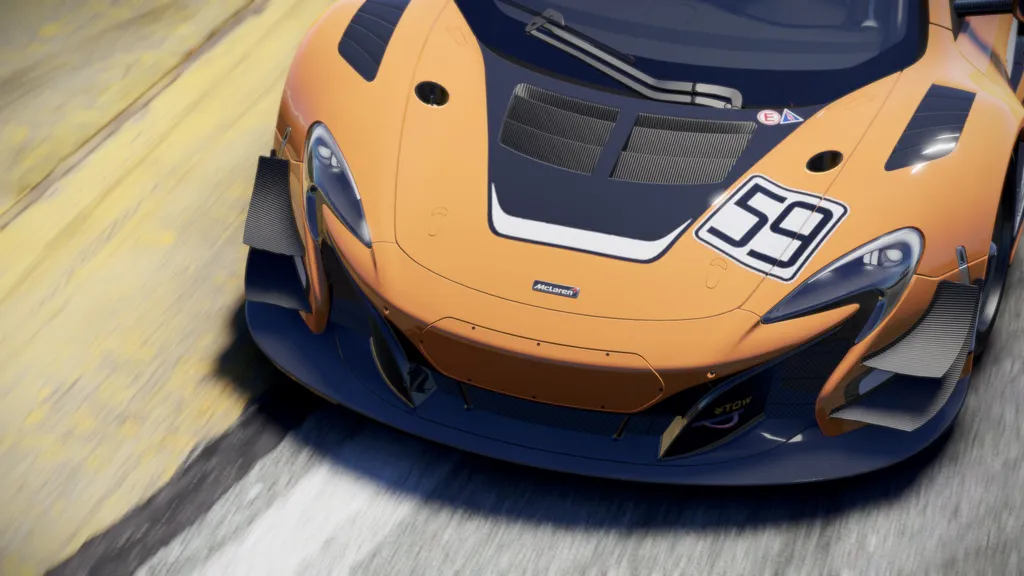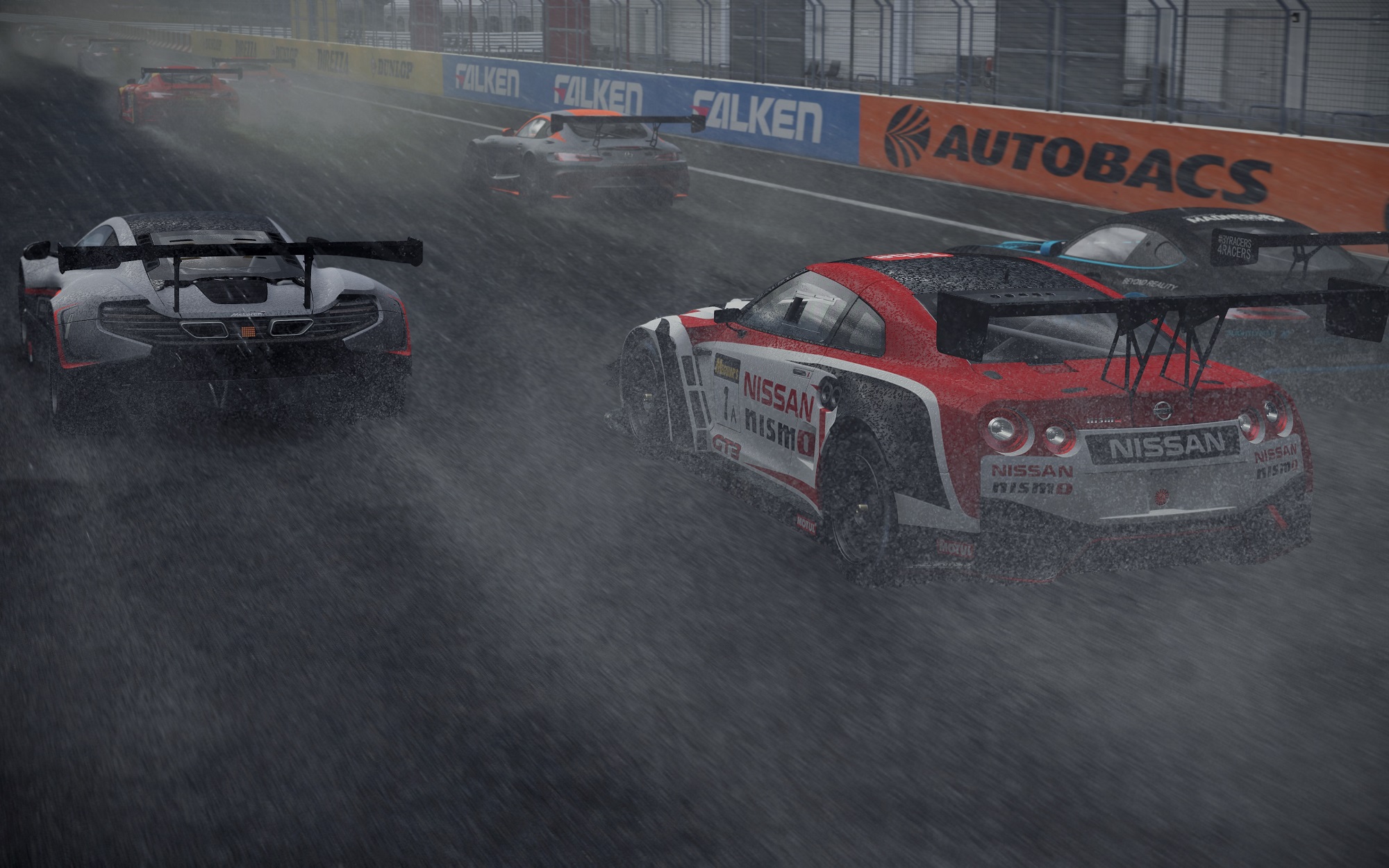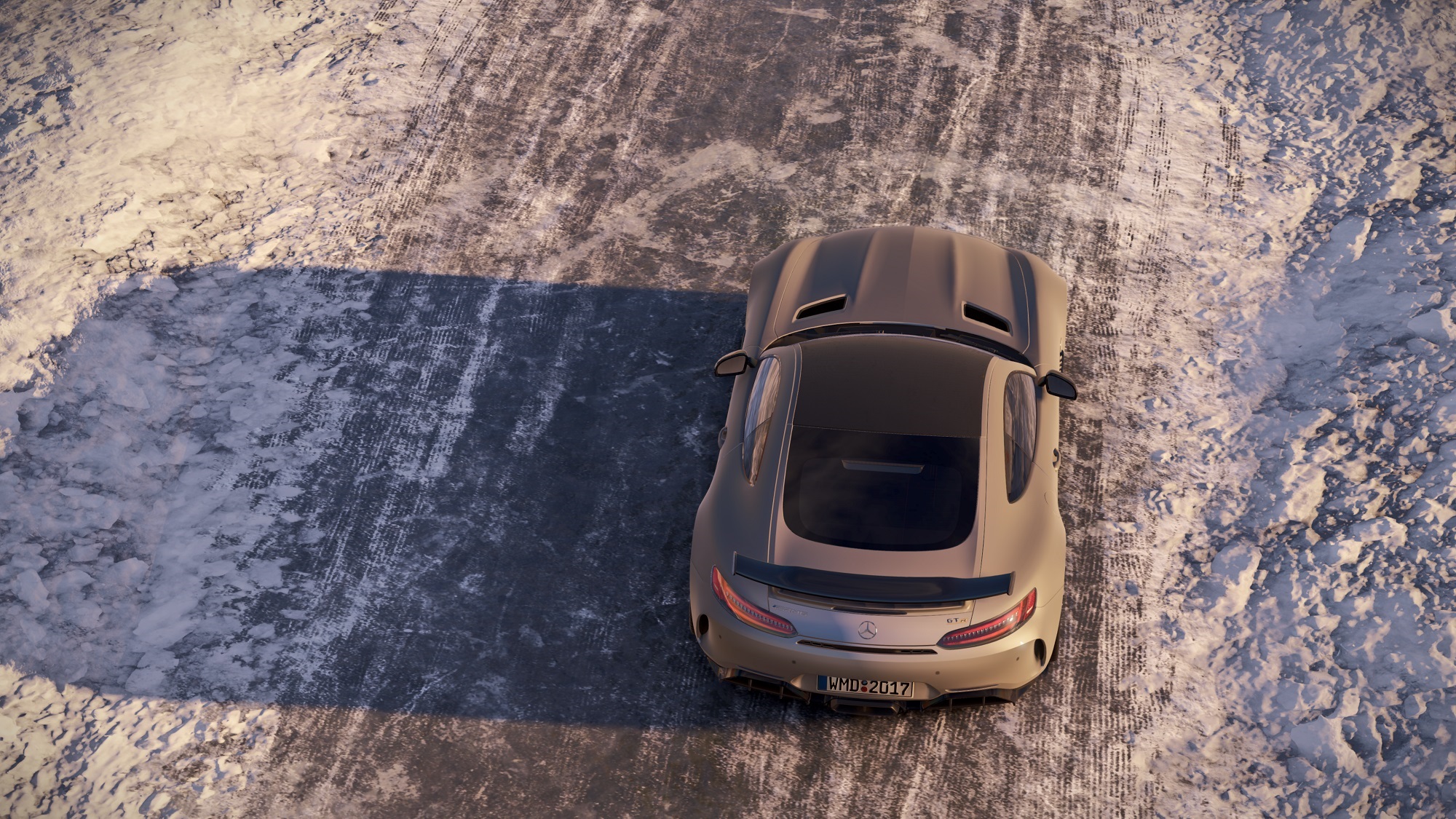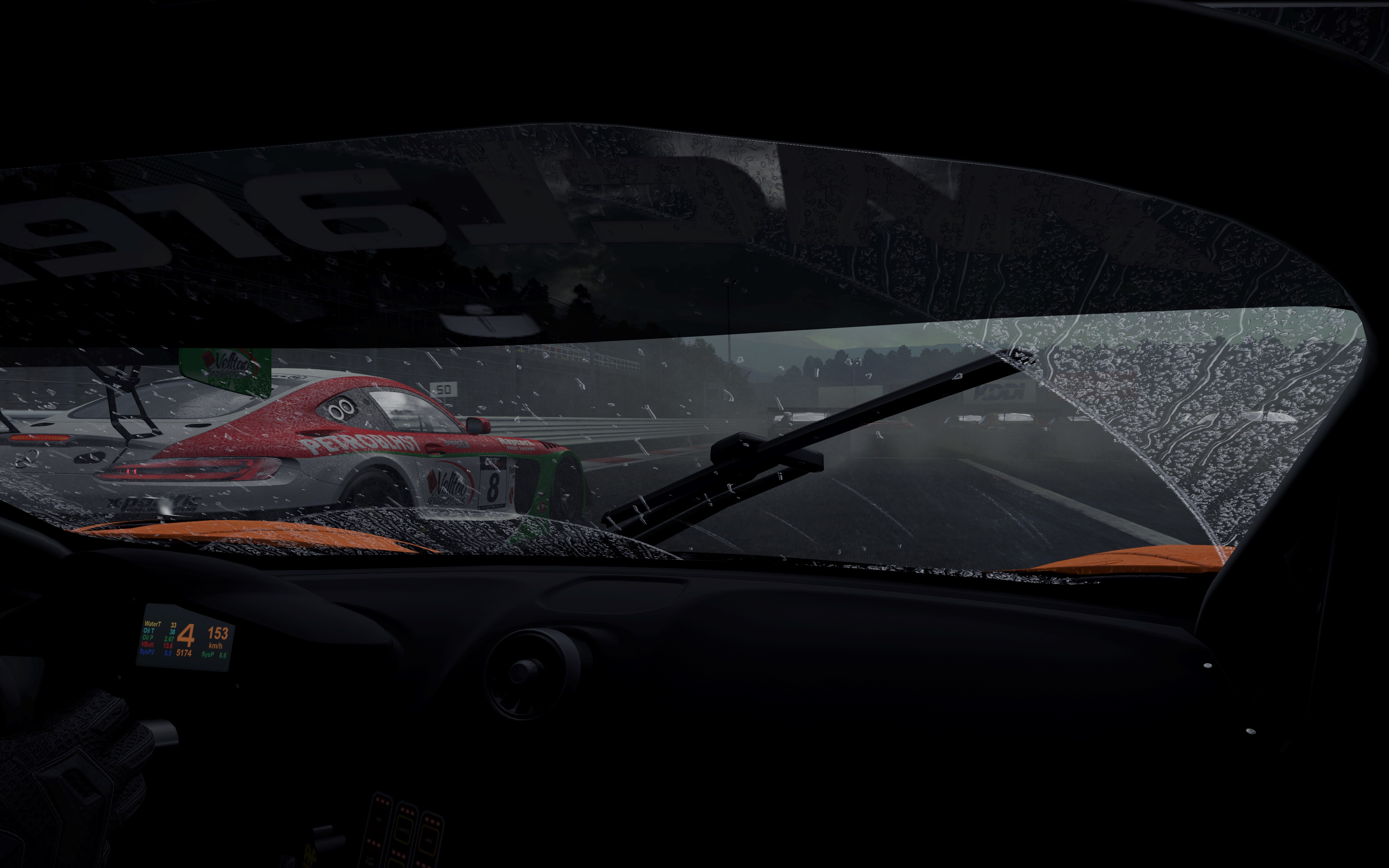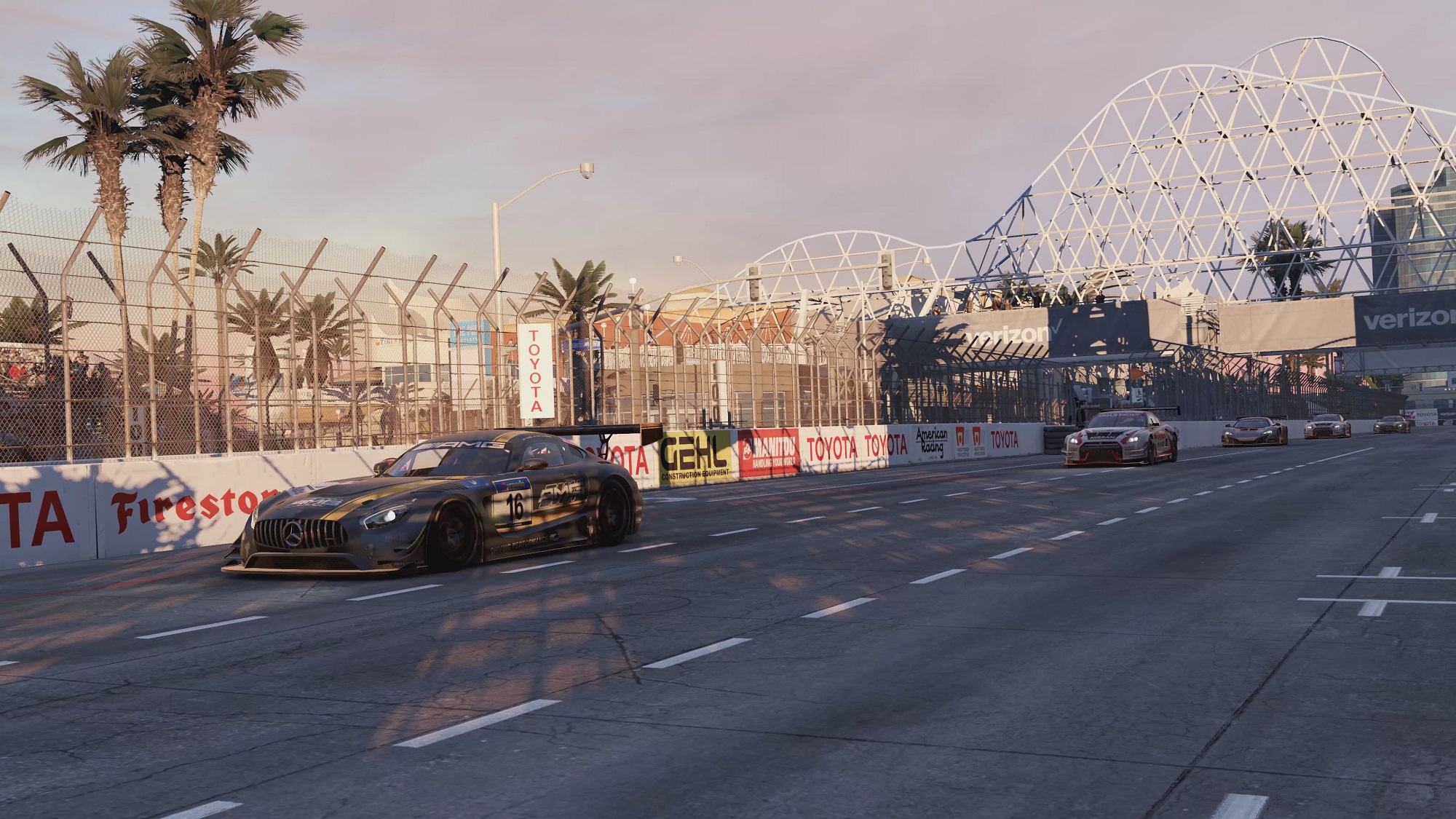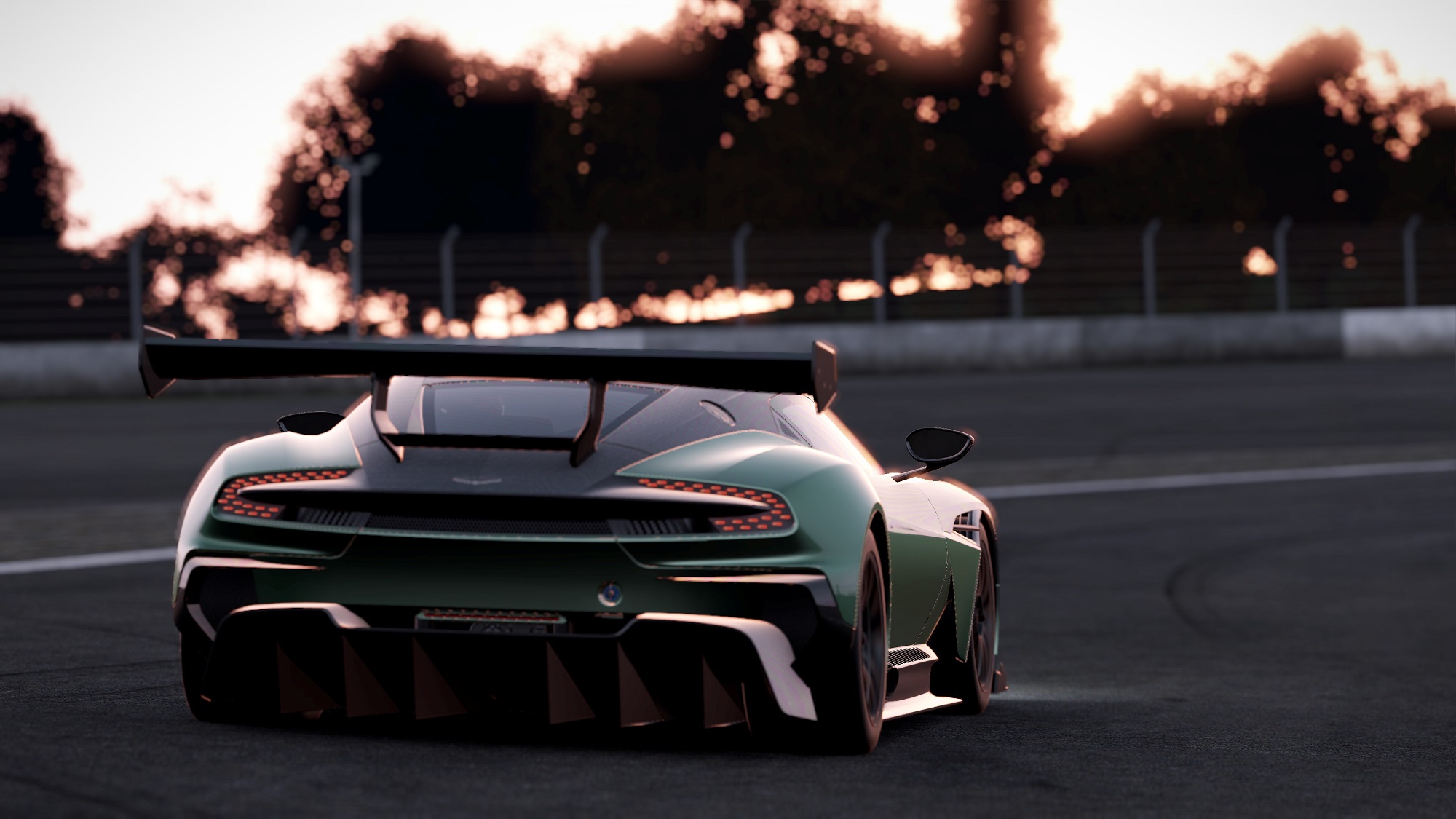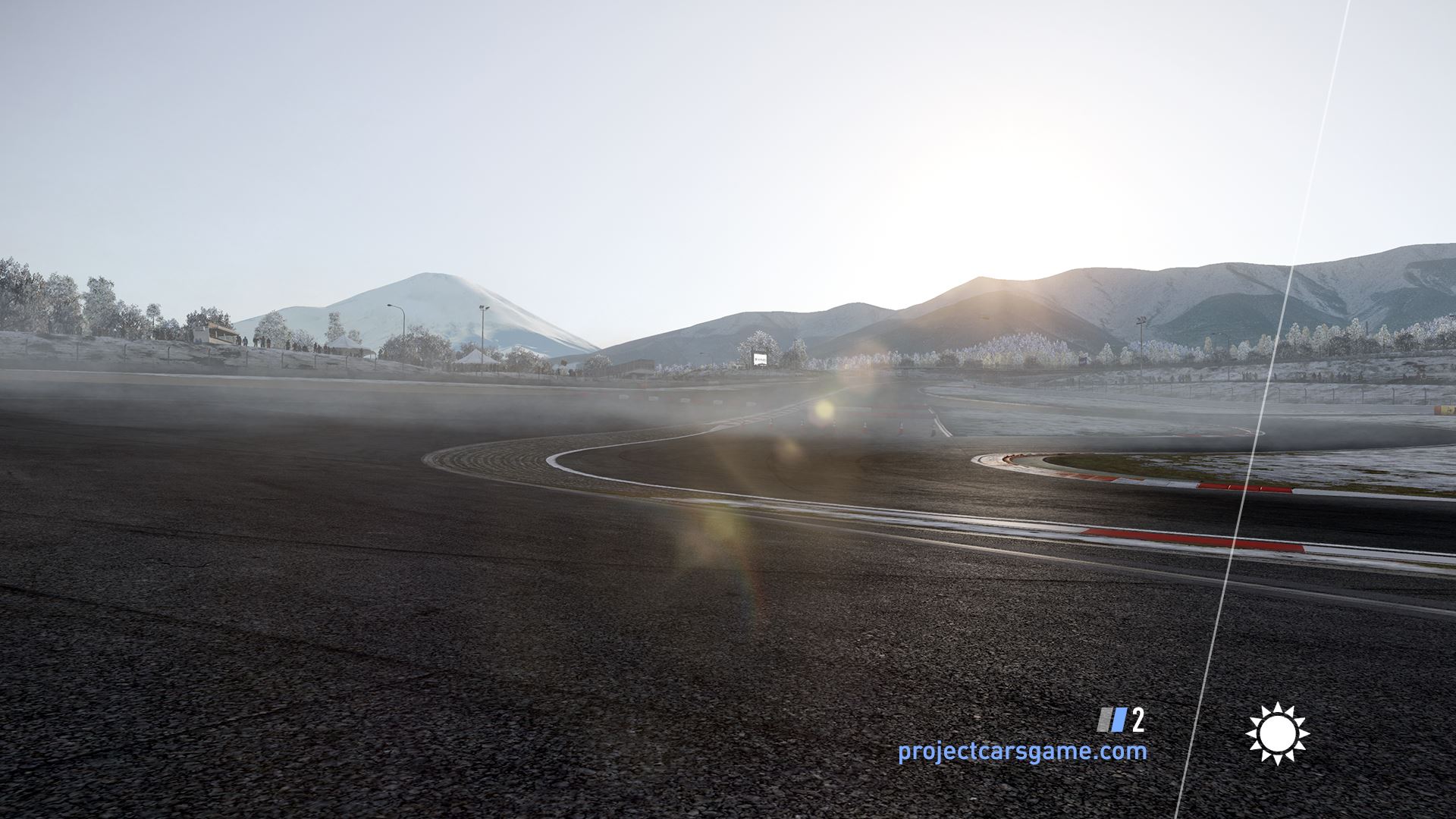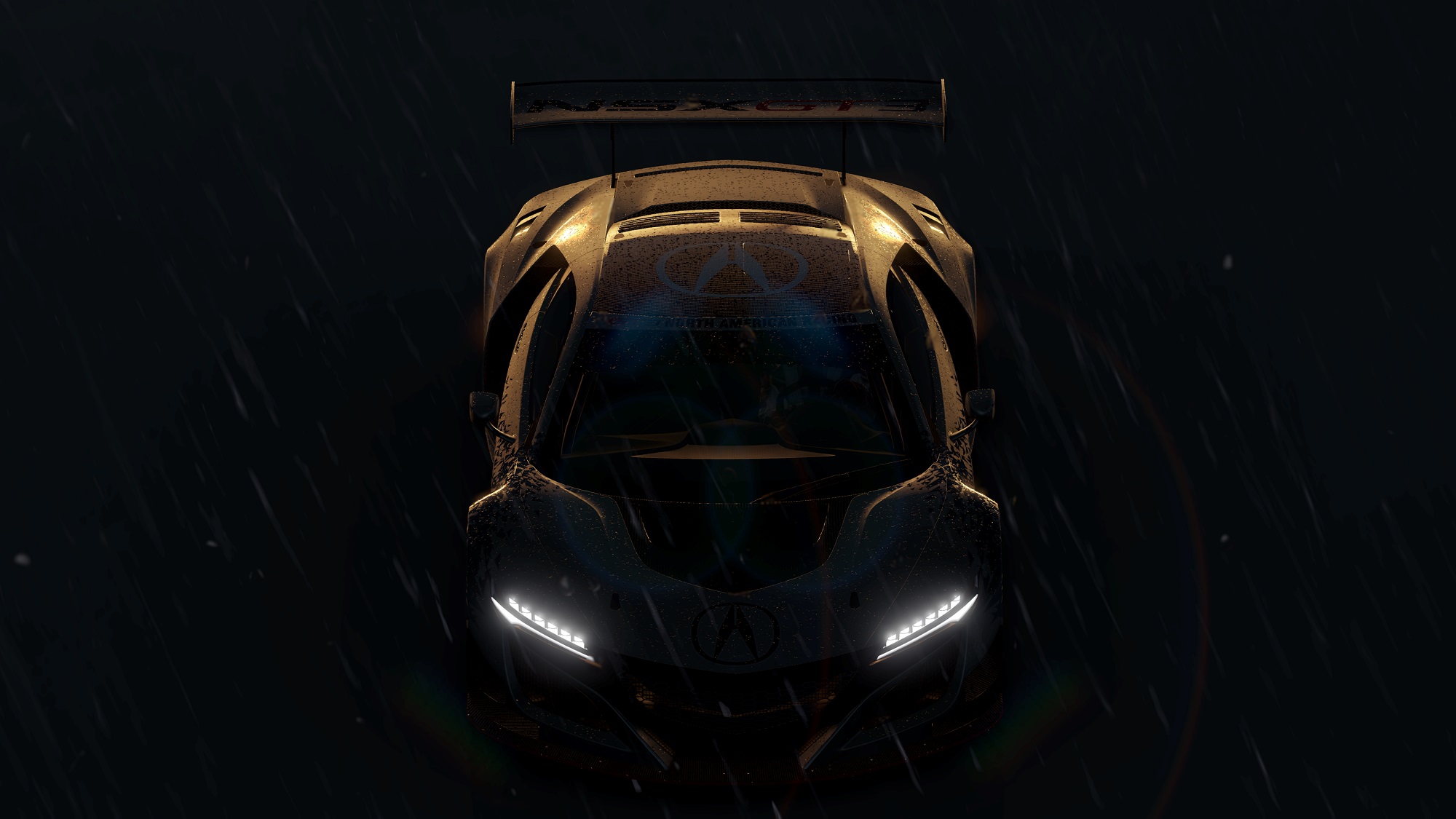How do you improve upon something that the developers themselves already set out to establish as “the ultimate driver journey” when it released in 2015? That’s what Project CARS from Slightly Mad Studios was supposed to be, an ultimate driving game that delivered on all fronts. For the most part, you could argue it delivered, although some lingering bugs are still unsolved, it doesn’t feature any snow, and misses some of the core components that genre fans have grown to love in the nearly two years since its release.
Now with Project CARS 2, the direct sequel to the original hyper-realistic racing simulator, Slightly Mad Studios (and publisher Bandai Namco) wants to set the bar even higher. After going hands-on with the game at a private press only preview event, I can confirm that expectations are high and goals are lofty. If everything falls into place, Project CARS 2 could very well end up being the best and most immersive VR racing simulator ever made.
https://www.youtube.com/watch?v=v5MESKmFtQs
Since the original game already had such a strong foundation, the studio has spent its time iterating, improving, and expanding on the core engine itself. In some ways, Project CARS 2 feels like the game that the original wanted to be. It’s a victory lap for a franchise that’s just starting to hit its stride.
At the press event, I had the pleasure of checking out Project CARS 2 running on a super-powered PC, hooked up to an Oculus Rift CV1, in a legitimate racing setup completed with seat belt-adorned chair and authentic racing wheel plus pedal apparatus. At first, it seemed like I was about to jack into The Matrix, if Neo had learned professional driving instead of Kung Fu.
“A lot of the issues people have with VR are automatically resolved with a racing game,” said Stephen Viljoen, Game Director at Slightly Mad Studios during an onsite interview. “The question of how do you move around is moot because you’re in a car, you just drive.”
Heeding his advice, once the light turned green I slammed my foot down and just drove. Somewhere between my peeling out and my crashing into the wall at the end of the first turn made me realize I wasn’t ready for the spotlight. I’ve never been much of a racing sim person, but I’ve always appreciated the attention to detail. Project CARS 2 feels like the Tekken of the racing world — intricate and complicated — whereas Driveclub VR feels more like Mortal Kombat: approachable, but packs plenty of depth when you dig into it.
In the case of the original Project CARS, VR was seemingly a bit of an afterthought. The team was always passionate about the technology, but since it wasn’t commercially available to the public when the game released in 2015, it had to be incorporated after the fact. It worked great and some drivers even used it for training, but it was clear the VR integration wasn’t part of the original game’s initial design process. That’s not the case with Project CARS 2 — it will be there at launch and was always conceived as part of the final product.
“When you’re in VR, there is already a natural interface with the inside of the car itself and it feels very natural and realistic,” explained Viljoen. “If you’re wearing a VR headset, it already feels like you’re wearing a racing helmet. When you play the game and you see the steering wheel, and you feel it in real life, it provides a powerful connection.”
That connection was on display as I regained control of my car, spun the wheel in my hand, and got back on the track. Fumbling and skidding around corners, I made my way across the finish line and completed the first lap far behind my opponents. That’s when it started to rain.
“Over the course of a race, things happen that change the conditions of the track,” said Viljoen. “As you drive, you’re burning rubber on the track that will be left behind as tiny specks of debris. You’re creating dry marks through the rain, dividing the puddles, and dispersing the snow. Every lap there will be more grip onto the track because of the rubber and tires. If you get off the track and pull gravel from the dirt into the road, that’s going to affect your grip. In the first game, the surface conditions of the track were static for the course of the race, but now the actual track surface is affected. If you’re not leading the pack and you’re behind another car, its hot tires will cut through the snow and rain to form a drying line. If you stay on that drying line while driving, your grip will be better.”
The dynamic weather and time systems are carried over as well, allowing you to customize how quickly time passes and weather changes within an individual race. Puddles appeared on the road realistically and in different spots than the would for other tracks. Instead of the game registering the track as simply “wet” my tires interacted with individual pieces of gravel and water as if it were really there. The technological leap forward is immediately noticeable.
By the time lap three started, the raining stopped and my driving skills seemed much better.
“The physics of the cars have improved a lot, from the mechanical underpinnings all the way down to the tire models,” said Viljoen. “In Project CARS 1, one of the areas that we took a lot of criticism is that it felt fine until you got to the edge and things started sliding, it was difficult to catch. That wasn’t very authentic. In real life, if you’ve ever been in a street car, bringing a car back to control isn’t that difficult to do.”
All of that felt great while I was playing, but if you’re like me and have spent any length of time inside a VR headset while racing in the original Project CARS, you’ll have noticed the mirrors. For lack of a better term, they suck. They’re flat and they don’t appear to have the depth recognition that an actual mirror does. They just don’t feel realistic at all.
“Previously, they operated more like screens,” admitted Viljoen. “But in Project CARS 2, they have depth with proper parallax and there’s full proper positional audio in VR. You can hear where a car is located behind or around you. If you look in the mirror and don’t see it, you can lean and move your head and see how the mirror reflects differently like in real life. It sounds like a little thing, but it makes a huge difference.”
Project CARS 2 has ambitious dreams that all seem to be falling into place based on what we’ve seen. It felt great to play, the sights and sounds are better than ever, and the amount of content feels up to par with the presentation quality. At release, over 170 licensed cars will be featured, including a massive track roster, up to 4K or even 12K triple monitor support on PC, VR headset support, and all-new vehicle types and motorsport classes such as Rallycross and IndyCar.
Since VR through the Rift and Vive is confirmed, what about other platforms? Since Project CARS 2 is also coming to Xbox One and PlayStation 4 when it releases, I had to ask about PlayStation VR (PSVR) support.
“We can’t commit 100% to PSVR yet because there is still a lot of optimization left to do and all of the new things we’ve added,” said Viljoen. “For VR, we need to achieve an additional level of performance. We don’t want to compromise like other racing games have and lose any of our authenticity on PSVR. If we can get there, we will release it. We’ll eventually get it there one way or another, but we can’t promise it will be there at launch. The plan is to deliver the entire game.”
Project CARS 2 is due out in late 2017 for PC (with Rift and Vive support), PS4, and Xbox One; PSVR support is not guaranteed, but is planned. Check the official website for more details.

